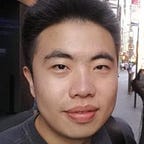Million dollar problems, but are they a fit for Zensors?
In the second phase of our market research, we decided to dive deep into two promising verticals for Zensors: facilities management and industrial baking. In industrial baking, we were very fortunate to have the opportunity to visit two local baking institutions. The two institutions cover the two extremes of the industrial baking spectrum, one being a small-scale artisanal bakery, the other a large-scale automated snack factory. Through these two visits, we were able to gather first-hand information on the workflow and problems in the domain of industrial baking, and more precisely evaluate if Zensors is a fit in the baking space.
The space
To get a better understanding the workflow and challenges faced in larger scale food production, the team and our faculty advisor, Jeremy went on a site visit to a local snack factory. The company is a leading contract manufacturer that specializes in protein bars and baked goods, carrying out production for major brands. Their factory extensively employs automated production systems, from cutting, to baking, to packaging. Combining all production power, the manufacturer is capable of producing more than 200 pounds of finished goods per minute.
Problems faced
Our visit began with a primer on the daily operations and problems faced in the factory. One major problem the factory faces is in the quality control process. The quality control process is mainly manual and is carried out in the form of periodic sampling by quality control technicians. These quality control technicians manually log sampling data into a software system. If a compromise in quality was detected, there’s no way of knowing the exact point of time it started, thus the production has to be reverted to the most recent checkpoint, discarding all products produced after that time. This process introduces a major source of inefficiency in the production system.
Another problem mentioned by our hosts was the inconsistency on the production line. The inconsistency takes many forms: the temperature of baking, the thickness of granola sheets, the uniformity of packaging, etc. Some of these problems are more serious than the others, for example, an error in the size of granola bar can result in unsellable or returned products and revenue loss, whereas inconsistency in packaging (for example, cereal bars facing the wrong direction in a case) might cause customer annoyance but not directly lead to a loss in revenue. As for the seriousness of the problem, the granola sheets thickness problem can cost the factory millions of dollars each year in material loss. The factory has looked into existing sensing solutions to this problem, but available technology in the market right now has limitations in integration with their existing production system.
Observations
After a sit-down conversation that introduced us to the facility and organization as a whole, our gracious hosts gave us a tour in their factory space so we could observe the production line in action. The entire production system is connected by conveyor belts that transform raw materials through different machines in the system into packaged products at the other end. We noticed that there are a few places in the production line that still require occasional human intervention, and these are usually at the connection point of two machines or conveyor belts. Much of the production line is exposed, making it possible for visual sensing solutions to operate. However, sensing alone would not be the most effective solution to the problem the production line faces. A successful solution should complete the sensing/execution loop, where a physical adjustment to the production line is carried out right after sensing an abnormality, so the impact of the error could be reduced to a minimum level.
Findings
From our visit, we observed a need for sensing solutions and area for improvement along the production line. However, these use cases are not exactly well-suited for characteristics of Zensors technology. To begin with, to capture imagery of products on conveyor belts, Zensors will have to adjust its sample frame rate to match the speed of conveyor belts, which will need to be extremely frequent. In addition, an effective sensing solution for the production system should be able to carry out physical adjustments to the production line. This can either be integrating with existing machines or developing physical execution capability of Zensors system. Both approaches are not the priority of Zensors in its current stage and would likely induce a high development cost. Deployment in spaces that require high precision, such as production lines, would involve an extended period of fine-tuning at the cost of manpower from Zensors team. And, given the uniqueness of each production line and the construct of each machine, the scalability of deployment is also questionable.
Given the reasons above, we concluded that automated baking production is not the best fit for Zensors. This also concluded our deep-dive into industrial baking. We see potential of implementing more advanced sensing solution in this market vertical, but very few use cases are well-suited for Zensors. With more development and a close partnership with a production facility, perhaps it could be a fit for Zensors. As our other focus market vertical, co-working spaces, begin to show more and more potential, we have decided to prioritize co-working spaces as our top market vertical moving forward.
